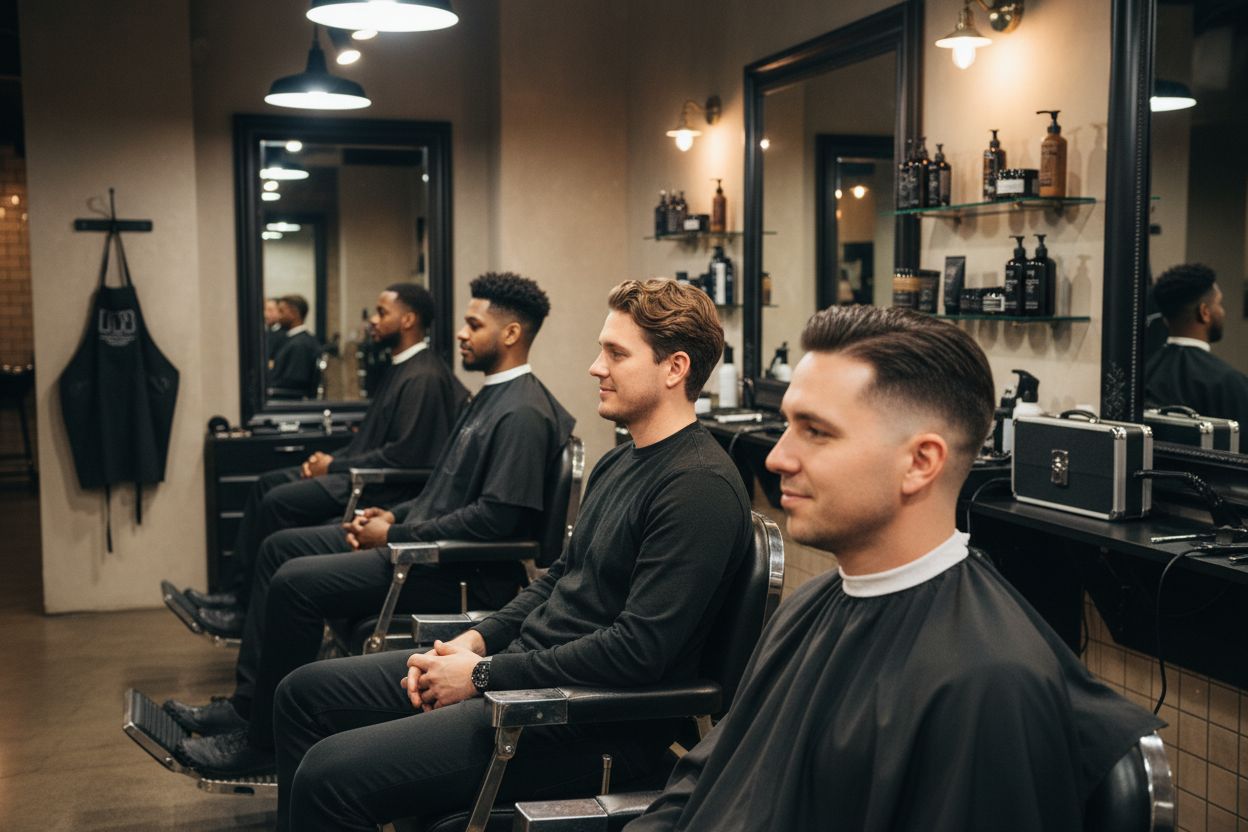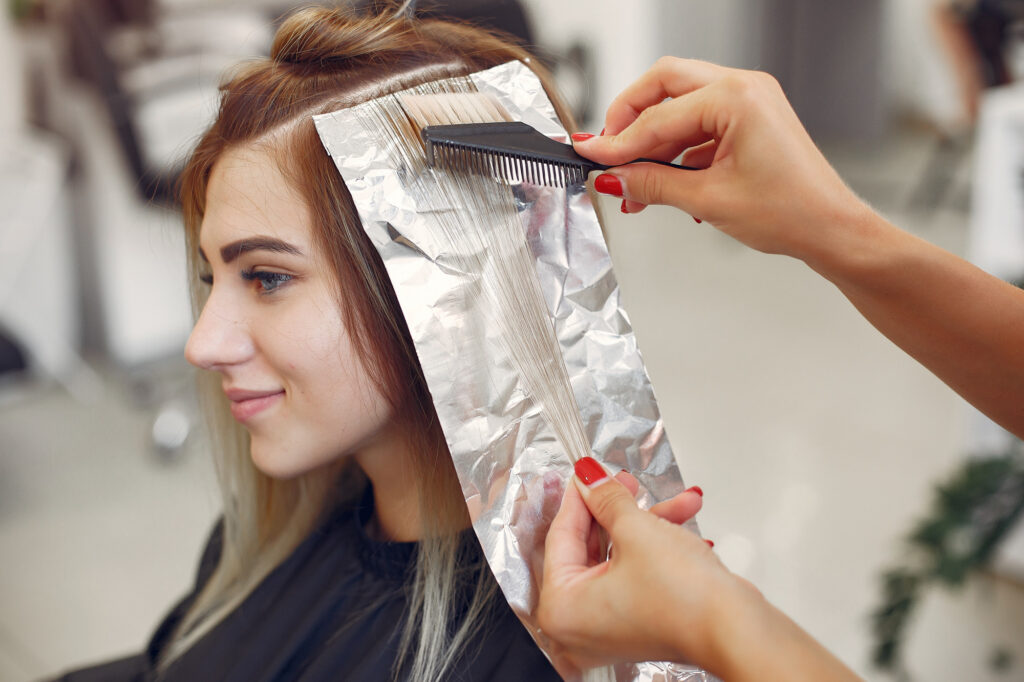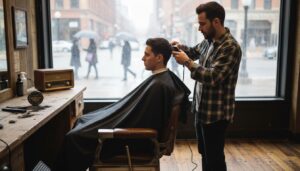Over 60 percent of men worldwide have tried a fade haircut at some point, making it one of the most requested styles in barbershops today. This haircut is more than a trending look. Its origins are rooted in cultural expression and precision, blending artistry with practical grooming. From sharp gradients to bold statements, the fade stands as a symbol of personal identity and skilled technique that adapts to different hair types and lifestyles.
Key Takeaways
| Point | Details |
|---|---|
| Fade Haircut Definition | A fade haircut is characterized by a gradual decrease in hair length, originating from African American barbers in the late 19th century, symbolizing precision and personal style. |
| Popular Variations | Common fade types include low, mid, and high fades, each offering unique visual effects tailored to different styles and hair textures. |
| Technique & Maintenance | Creating a perfect fade involves precise gradient techniques and regular maintenance, typically requiring professional touch-ups every 2-3 weeks to maintain sharpness. |
| Choosing the Right Fade | Selecting an ideal fade is important for personal expression, based on face shape, hair texture, and maintenance commitment, best done through consultation with a professional barber. |
Table of Contents
- Defining A Fade Haircut And Its Origins
- Popular Fade Haircut Types Explained
- Technique And Process Behind Fades
- Choosing The Right Fade For You
- Maintenance Tips And Common Mistakes
Defining a Fade Haircut and Its Origins
A fade haircut is a sophisticated hair styling technique where hair progressively gets shorter from the top of the head down to the sides and back, creating a seamless gradient effect. According to historical research from Barber & Co, this distinctive haircut actually emerged from African American barbers in the late 19th and early 20th centuries, representing a statement of precision, professionalism, and personal style.
The evolution of the fade is deeply intertwined with technological and cultural developments. With the advent of electric clippers during World War I and II, barbers could create increasingly precise hair gradients, transforming the fade from a niche style to a mainstream grooming technique. Military contexts played a significant role in popularizing this clean, low-maintenance haircut that emphasized hygiene and sharp appearance.
By the mid-1980s, the fade had transcended its functional origins and become a powerful cultural expression. According to Wikipedia, the high-top fade became an iconic style in hip-hop culture, popularized by musicians and actors like Larry Blackmon from Cameo, Salt-N-Pepa, and Will Smith. This transformation showcased how a practical haircut could become a bold fashion statement, reflecting personal identity and artistic creativity.
Key characteristics of a classic fade include:
- Gradual length reduction from top to bottom
- Sharp, clean lines
- Precise blending techniques
- Versatility across different hair textures and personal styles
Today, the fade remains a dynamic and popular haircut, continually reinvented by skilled barbers who blend traditional techniques with contemporary aesthetics.
Popular Fade Haircut Types Explained
Fade haircuts are not a one-size-fits-all style, but rather a versatile grooming technique with multiple variations to suit different personal aesthetics and hair textures. According to research from Lifestyle by PS, the primary fade categories are distinguished by their starting point on the head: low fades, mid fades, and high fades. Each type offers a unique approach to gradually reducing hair length, creating distinct visual effects that can dramatically transform your overall look.
When it comes to precision and edge, several specialized fade styles stand out. According to Souls and Styles, these include skin fades (tapering down to bare skin), drop fades (curving dramatically behind the ear), and burst fades (creating a semicircle around the ear). These advanced techniques allow barbers to create intricate, personalized looks that go beyond traditional haircut boundaries. Some men prefer subtle shadow fades with softer gradients, while others opt for more dramatic temple fades focused around the hairline.
Fade haircuts also beautifully integrate with various hairstyle combinations. Barbers can seamlessly blend fades with popular styles like crop cuts, pompadours, buzz cuts, side parts, quiffs, and even textured curly styles. This versatility means that regardless of your hair type or personal style preference, there’s a fade variation that can complement your look. The key is working with a skilled stylist who understands the nuanced techniques required to create a smooth, precise gradient.
Key fade types include:
![]()
- Low Fade: Gradient starts near ear level
- Mid Fade: Gradient begins midway up the head
- High Fade: Dramatic taper starting near the temple
- Skin Fade: Completely tapers to bare skin
- Drop Fade: Curved gradient behind the ear
- Burst Fade: Semicircle fade around the ear
Here’s a comparison of the most popular fade haircut types and their defining features:
| Fade Type | Gradient Start Point | Signature Look | Best For |
|---|---|---|---|
| Low Fade | Near ear level | Subtle, natural transition | Classic, subtle style |
| Mid Fade | Midway up the head | Balanced, noticeable gradient | Versatile, most face shapes |
| High Fade | Close to the temples | Dramatic, edgy contrast | Bold, modern appearance |
| Skin Fade | Varies (to bare skin) | Ultra-sharp, clean finish | Sharp, high-impact look |
| Drop Fade | Dips behind the ear | Curved, sculpted effect | Unique, personalized style |
| Burst Fade | Semicircle around the ear | Rounded, tapered accent | Trendy, creative styles |
Choosing the right fade is about understanding your hair’s natural texture, face shape, and personal style – a true reflection of individual expression through precise grooming.

Technique and Process Behind Fades
Creating a perfect fade is an intricate art that requires precision, skill, and deep understanding of hair textures and cutting techniques. According to GQ, the process begins with careful hair sectioning, typically using a horseshoe-shaped approach that allows barbers to create a systematic and controlled gradient. Professional barbers approach fade techniques with methodical precision, starting with longer lengths and gradually working towards shorter sections to achieve a smooth, seamless transition.
The core of fade mastery lies in the specific cutting motion and tool selection. As explained by Salon Deauville, expert barbers use upward “C” motions with electric clippers, carefully selecting different guard lengths to create nuanced gradients. Clipper guards play a crucial role in controlling hair length, with barbers strategically switching between guards to create soft, blended transitions. This technique requires an extraordinary level of hand control and an understanding of how hair falls and moves.
Maintaining the integrity of a fade haircut extends beyond the initial cut. Common pitfalls include uneven blending, incorrect guard usage, and neglecting regular maintenance. Professional stylists recommend scheduling touch-up appointments every 2-4 weeks to preserve the crisp lines and smooth gradient. The complexity of fade techniques makes DIY approaches risky, with experts strongly cautioning against attempting intricate fade styles without professional training.
Key technical considerations for a perfect fade include:
- Precise sectioning of hair
- Systematic guard length transitions
- Upward “C” motion cutting technique
- Careful blending between different hair lengths
- Understanding individual hair texture and growth patterns
- Regular maintenance and touch-ups
Ultimately, a exceptional fade is more than a haircut – it’s a personalized expression of style, requiring the skilled hands of a true hair artisan.
Choosing the Right Fade for You
Selecting the perfect fade haircut is more than a style choice – it’s about understanding your unique facial structure, hair texture, and personal aesthetic. According to experts from By the Blade, your face shape plays a crucial role in determining the most flattering fade style. Square faces typically look exceptional with mid-to-high fades featuring textured tops, while round faces benefit from high fades that add visual height and create a more elongated appearance.
According to House of Handsome, different face shapes demand strategic fade approaches. For those with oval faces, you’re in luck – this versatile shape works beautifully with nearly any fade variation, from low tapers to high and tight styles. Triangle-shaped faces should focus on balancing the jawline, often achieving this through carefully crafted mid fades with soft, textured tops. Heart-shaped faces tend to look most striking with low-to-mid fades complemented by fringe or textured styling that softens the overall silhouette.
Beyond face shape, consider your personal style, hair texture, and professional environment when choosing a fade. Professional settings might call for more conservative, cleaner fade styles, while creative industries often welcome more dramatic, bold interpretations. Your hair’s natural texture – whether straight, wavy, or curly – will also influence how a particular fade looks and how much maintenance it requires. Consulting with a skilled barber who can assess your individual characteristics is key to finding a fade that not only looks great but feels authentically you.
Key considerations when selecting your ideal fade:
- Match fade height to your face shape
- Consider your hair’s natural texture
- Evaluate your professional and personal style
- Think about maintenance commitment
- Consult a professional barber for personalized advice
- Be open to experimenting with different fade styles
Remember, the perfect fade is a personal journey of self-expression – there’s no one-size-fits-all solution, just the style that makes you feel confident and comfortable.
Maintenance Tips and Common Mistakes
Maintaining a crisp, sharp fade requires more than just a great initial haircut – it demands consistent care and attention to detail. According to Tech Bullion, professional touch-ups are critical, with experts recommending scheduling appointments every 2-3 weeks to preserve the fade’s precise lines and gradient. The key is understanding that a fade is a dynamic style that quickly loses its sharpness without regular maintenance.
According to Style O Rose, scalp and hair health play a crucial role in fade maintenance. Scalp care involves using lightweight, non-greasy products that keep the skin moisturized without causing buildup. Common mistakes include over-styling, applying heavy products, and using excessive heat, which can compromise the fade’s clean lines and overall appearance. Professional barbers emphasize the importance of gentle styling techniques and minimal product usage to maintain the fade’s original precision.
Technical maintenance requires careful attention to blending and guard selection. One of the most frequent errors is uneven blending, which can be avoided by using the correct clipper guards and transitioning gradually between lengths. If over-cutting occurs, the best solution is to carefully blend surrounding areas or seek professional help. Home maintenance should focus on preserving the fade’s integrity between professional touch-ups, using minimal products and avoiding aggressive styling that could disrupt the carefully crafted gradient.
Key maintenance tips for a perfect fade:
- Schedule touch-ups every 2-3 weeks
- Use lightweight, scalp-friendly products
- Avoid heavy styling and excessive heat
- Keep scalp moisturized with light oils
- Use minimal product to preserve fade clarity
- Address minor imperfections carefully
Remember, a great fade is a partnership between you and your barber – consistent care and professional touch-ups are the secrets to maintaining that fresh, sharp look.
Transform Your Fade Haircut With Expert Precision at Joel C Ma Hair Studio
Struggling to achieve a seamless fade that looks sharp and polished every day? The article explains how the difference between an ordinary fade and a remarkable one comes down to advanced technique, skillful blending and personalized consultation. If you feel frustrated by uneven blending, lack of creativity or fades that just do not fit your face shape, you are not alone. Many clients want the type of artistry and attention to detail described above, but find it hard to locate the right professional.

Now is your chance to experience the next level of fade haircuts tailored just for you. The master artists at Joel C Ma Hair Studio in La Jolla deliver customized fade styles that match your hair texture, facial structure and personal vision. Discover why so many San Diego locals trust us for flawless results and true luxury service. Ready to see how a fade should really look? Visit our home page at Joel C Ma Hair Studio to explore our service menu, see before-and-after transformations, and book your appointment today. Elevate your style with artistry and expertise—secure your consultation now for a fade haircut experience that sets a new standard.
Frequently Asked Questions
What is a fade haircut?
A fade haircut is a style where hair gradually shortens from the top to the sides and back, creating a seamless gradient effect. It’s known for its sharp, clean lines and versatility across different hair textures.
What are the different types of fade haircuts?
The main types of fade haircuts include low fades, mid fades, and high fades. Additional variations like skin fades, drop fades, and burst fades offer unique approaches to the classic fading technique, allowing personalization based on individual style.
How do I choose the right fade haircut for my face shape?
To choose the right fade, consider your face shape: square faces suit mid-to-high fades, round faces benefit from high fades, and oval faces can wear various styles. Consulting a skilled barber can help find a fade that complements your features.
How can I maintain a fade haircut?
Maintain your fade by scheduling professional touch-ups every 2-3 weeks and using lightweight, non-greasy hair products. Avoid heavy styling techniques and keep your scalp moisturized to preserve the sharpness and clarity of your fade.





